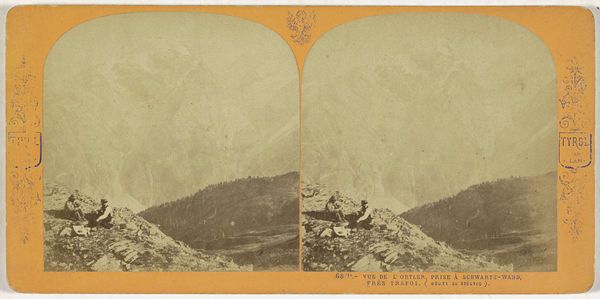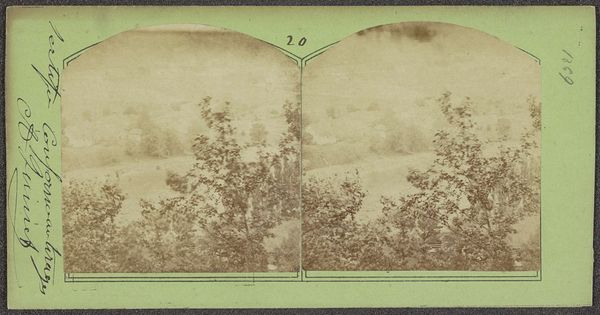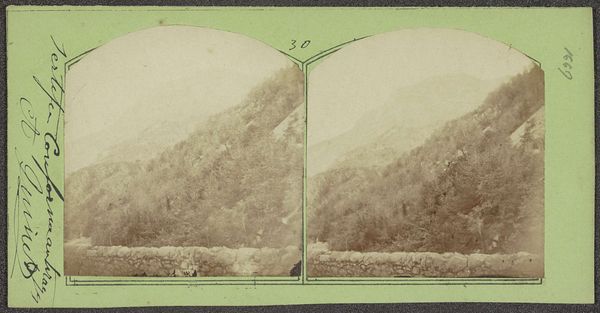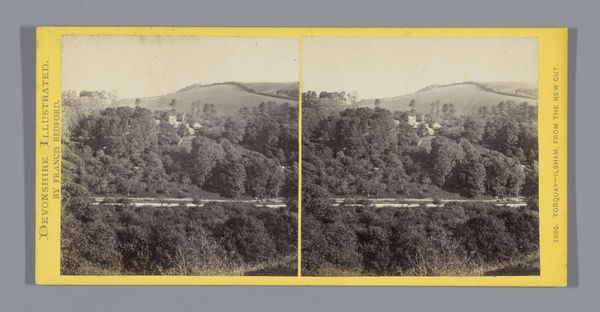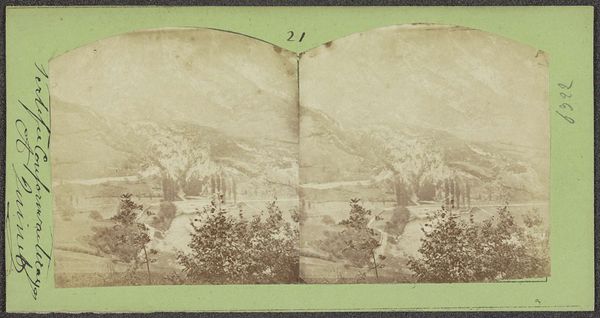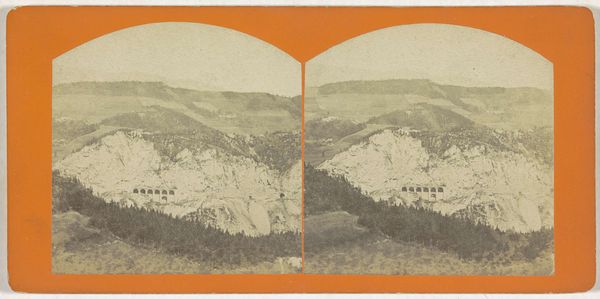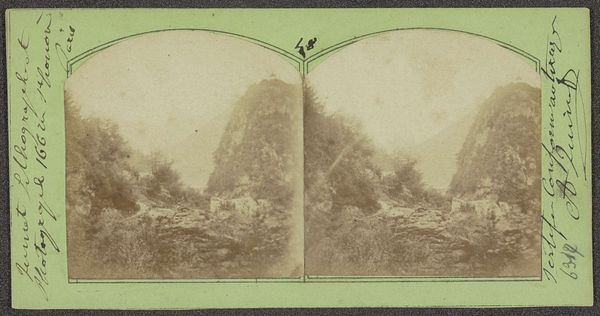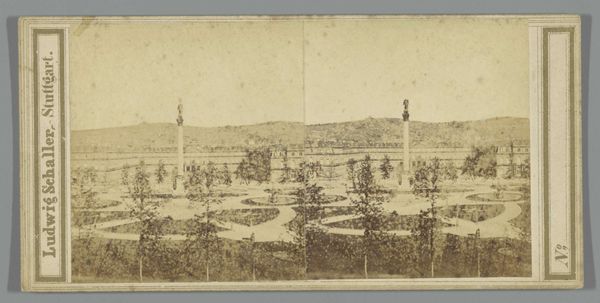
Dimensions: height 90 mm, width 172 mm, height 74 mm, width 70 mm, height 74 mm, width 71 mm
Copyright: Rijks Museum: Open Domain
Editor: This stereo card, "Gebouwen omzoomd door bomen" by Achille Quinet, made sometime between 1860 and 1880, gives us a peek into a past cityscape through photography. It looks like buildings nestled in a heavily forested area. What captures your attention about this image? Curator: It's compelling to consider this photograph not just as a representation of architecture and landscape, but as a record of a specific historical moment shaped by labor, resource extraction, and developing modes of transportation. Look at how the built environment seemingly merges with the forest. Editor: Yes, the way the buildings and the forest appear equally textured makes me think about it in a new light. How would the production of photographic materials like the glass plates impacted the representation itself? Curator: Exactly. The materiality of early photography, the chemistry involved, the slow exposure times – all these factors conditioned the visual outcome. Notice how detail is somewhat sacrificed for the overall composition. The availability of certain resources, where the glass was produced, who mixed the chemicals – it all connects to a broader economic landscape. Were these materials sourced locally, impacting local industries? Editor: That makes me think about the relationship between photography and capitalism. How photographs also served commercial interests, documenting industrial progress and shaping perceptions of landscape and development. It prompts you to think what kind of buildings these might be and how people used them. Curator: Precisely. And think about who could afford a stereo card. Consumption is implicit in the act of viewing. Consider who owned and controlled the means of photographic production at the time. It reflects existing class structures and reinforces a specific power dynamic. Editor: Seeing this image, considering it not just for its subject matter, but as an object shaped by very material conditions, really enriches the way I engage with it. Thank you for highlighting those considerations. Curator: Absolutely! Seeing how the materiality informs its production invites new approaches to art history.
Comments
No comments
Be the first to comment and join the conversation on the ultimate creative platform.


